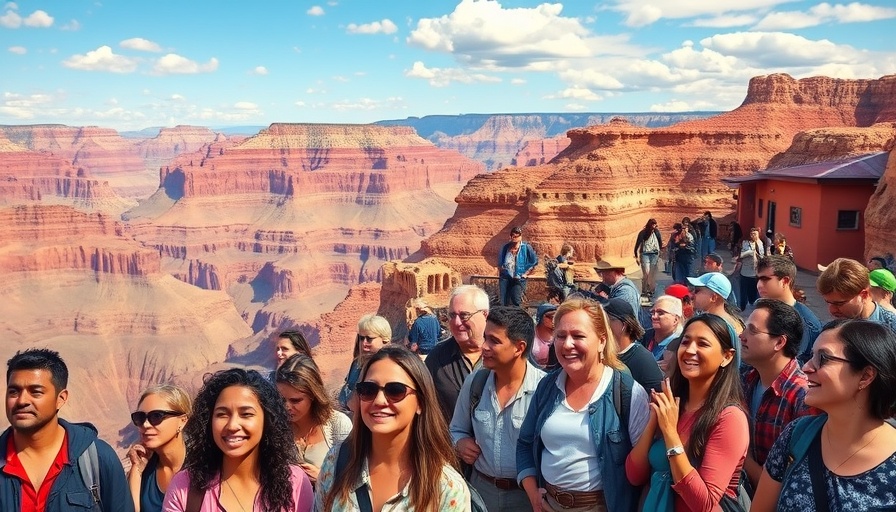
New Fees at National Parks: A Policy Shift Explained
In July 2025, the implementation of higher fees for foreign tourists visiting national parks in the United States sparked significant outrage and discussion across the nation. This policy, part of the 'America First' initiative spearheaded during Donald Trump's administration, is described as a 'commonsense, sustainable step' aimed at preserving the iconic landscapes of America.
Why Higher Fees? Understanding the Rationale
The National Park Service has long faced challenges related to funding and maintenance. By imposing a fee increase on international visitors, the aim is to generate additional revenue that will contribute to the preservation and enhancement of these treasured spaces. As tourism steadily increases, especially post-pandemic, these funds are vital for upkeep, staffing, and improving visitor experiences.
The Economic Impact: Who Really Benefits?
While the policy could benefit local economies that depend on national parks, the increased charges may have unintended consequences. Studies show that foreign tourists often spend more on average than domestic visitors, contributing significantly to areas surrounding these parks through lodging, dining, and activities. By raising fees specifically for foreign tourists, there is a risk of discouraging international travel at a critical time for recovery in the tourism sector.
Diverse Perspectives: Critics Speak Out
Critics of this policy include tourism industry advocates who argue that it undermines America’s reputation as a welcoming country. Politicians, particularly those representing border states that heavily rely on international tourism, have expressed concerns that this move could significantly impact local economies negatively. A balanced view recognizes the need for park funding without alienating key visitor segments.
The Wider Cultural and Societal Implications
This policy reflects broader themes in U.S. domestic policy regarding immigration and international relations. As parks symbolize national pride and heritage, the change prompts questions about accessibility and cultural exchange. Understanding these nuances is crucial, as they shape not only visitor experiences but also how America is perceived globally.
Future Trends: Predictions for U.S. Tourism
As the travel landscape evolves post-COVID-19, it is essential to monitor how pricing strategies will adapt. Future implications could see both higher domestic fees and alternative funding structures, such as public-private partnerships. The challenge for policymakers will be to ensure funds are utilized effectively while maintaining an open invitation to both foreign and domestic visitors.
Conclusion: A Call for Inclusivity in America’s Parks
The ongoing debate surrounding the national parks policy highlights the need for a balanced approach to tourism that fosters inclusivity. As discussions evolve, it's vital for policymakers to consider all stakeholders involved, ensuring that the beauty of America’s landscapes remains a shared experience for generations to come. Your voice matters in this dialogue—advocating for a fair tourism policy can shape a future where national parks are accessible to everyone.
 Add Element
Add Element  Add Row
Add Row 



Write A Comment